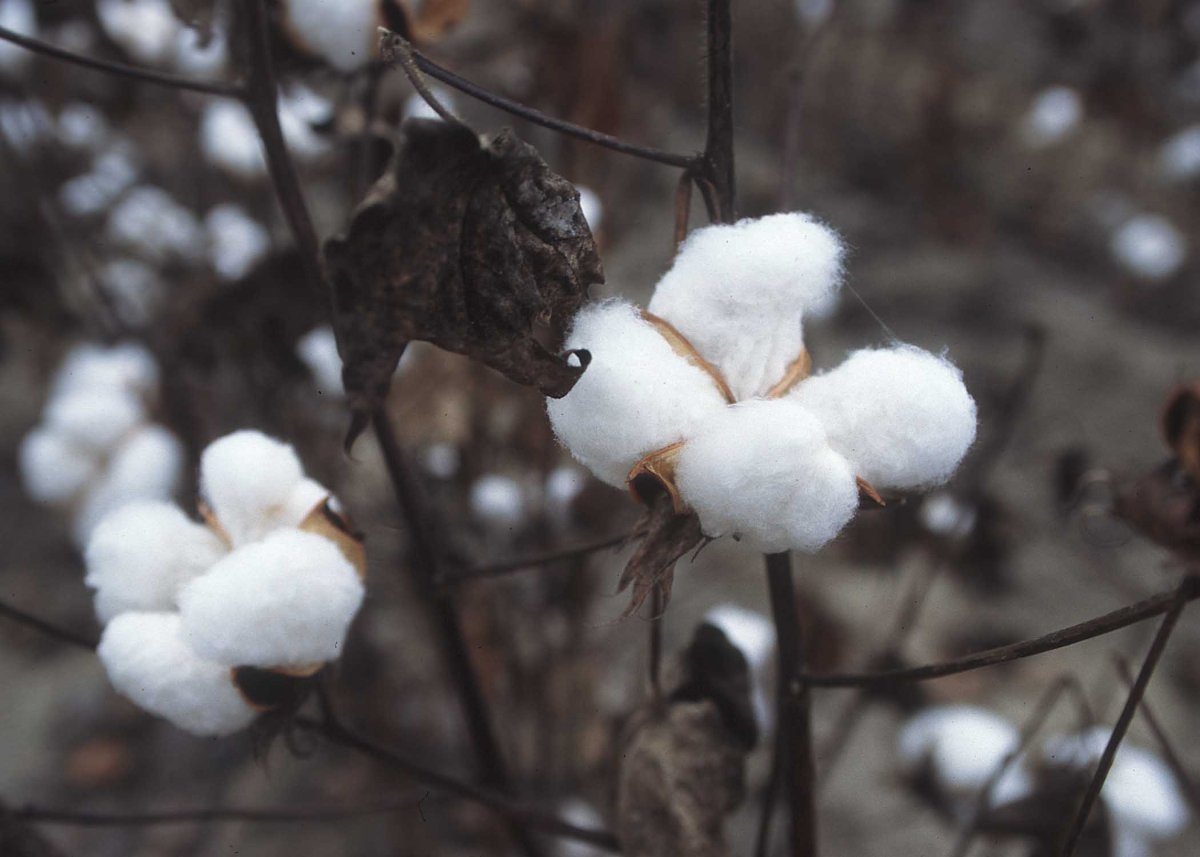In 1492, four species of cotton were being cultivated in the world – Gossypium herbaceum and G. arboreum in the Western Hemisphere, and G. hirsutum and G. barbadense in the Eastern Hemisphere. Gossypium barbadense predominated across Brazil and the Caribbean and G. hirsutum across Mexico and North America.
When Columbus arrived in the New World, he found the native Arawaks to be quite adept in cotton growing and textile manufacturing. By 1492, G. barbadense had become a common dooryard garden plant throughout the West Indies. When the Spanish explorers arrived in Mexico and South America in the 16th century, they also discovered that the Aztecs and Incas were producing cotton textiles from G. hirsutum. These early explorers found a prehistoric cotton belt stretching from the southwestern US, through Mexico, Central and South America to the Caribbean. Remarkably, almost the same spinning and weaving technologies were being used across this vast area as in the Old World centers of production.
In the 1500s, the Spanish and Portuguese traders repeatedly introduced G. barbadense and G. hirsutum into Spain, Africa, and India, but their cultivation did not take hold in a major way until centuries later. The Europeans first made a profit growing New World cotton in the Caribbean, first in Barbados (1630) and then in Jamacia (1660). Cotton production in the West Indies was dwarfed by sugar production but gained a toehold as a means of diversification.
Cotton cultivation was also introduced into the Carolina colonies of North America in the 1600s. The first cottons widely grown there were “Sea Island” types of G. barbadense imported from the West Indies. These Sea Island cotton may have been introduced into Barbados from Peru in the early 1600s. Speculation abounds, but it is possible that the Sea Island cottons hybridized with local wild upland types of G. hirsutum before they found their way to the US. The original Sea Island cotton grown in the West Indies were short day- types, while those grown in South Carolina and Georgia carried the day-neutral trait found in the upland types. Feral races of both types can still be found in the West Indies.
Cotton growing in the New World began to really pick up steam in the last quarter of the 17th century, when the British cotton mills began to roll out significant amounts of cotton yarn and textiles. The West Indies and Brazil were the first major suppliers of raw cotton to England, with Jamaica leading the way. The southeastern US took command in 1800, producing about 50% of the cotton that fed the British mills. By 1820, this proportion had risen to about 80%, where it remained until the Civil War. The West Indies had abandoned cotton growing altogether by 1835 and Brazil was reduced to a minor player by that time.
With the expansion west of cotton growing came a great change in the types of cotton grown. In the late 1700s, in the Carolinas and Georgia, the Sea Island Cottons were cultivated. These were not particularly high yielding but had exceptionally long staples that could be pulled away from the seeds with relative ease. Unfortunately, they were not well adapted to the climate of the Mississippi Delta, suffering from frosts and the prevalent saline soils. Much higher yielding in the Deep South were the Mexican Upland varieties of G. hirsutum that had been introduced in the 1700s.
As the British factory’s insatiable need for raw cotton continued to grow, US cotton production keep pace by expanding from the original British colonies of South Carolina, Virginia and Georgia into the vast, rich Mississippi Delta. To support this expansion, the Native American occupants were ruthlessly eliminated and the huge, now surplus slave populations of the southeastern states were relocated. To provide the Cotton Kingdoms workforce, probably a million enslaved people were forcefully redistributed across hundreds of miles from the southeastern US in a vast domestic slave trade.
By the mid-1800s, most of the world’s raw cotton was produced in the US. This dominance came crashing down in 1862 with the advent of the Civil War. The great textile mills of Europe were forced to search for new sources of cotton, and Egypt, India, and Brazil took up much of the slack. The Indians continued to produce their cotton from G. arboretum, while the Brazilian and Egyptian Industries relied on G. barbadense. What came to be called “Egyptian Cotton” was based on 19th-century hybrids of introduced Sea Island types and old perennial forms of G. barbadense.
After the Civil War, the US regained its prominence in cotton production, although India and Brazil remained strong throughout the 19th century and China became a force in the 20th. Gossypium hirsutum has almost completely replaced all of the worldwide acreage and now comprises about 95% of the world’s crop. Gossypium barbadense accounts for all but 1% of the rest.
Illustration: Cotton balls ready for harvest
Bibliography
Hancock, J. F. (2022) World agriculture before and after 1492: Legacy of the Columbian Exchange. Springer.
Johnson, W. 2013. River of dark dreams, slavery and empire in the cotton kingdom. The Belknap Press of Harvard University. Cambridge, MA.
Moore, J.H. 1956. Cotton breeding in the old south. Agricultural History 30: 95-104.
Stephens, S, G. 1976. The origin of Sea Island Cotton. Agricultural History 50: 391-399.
